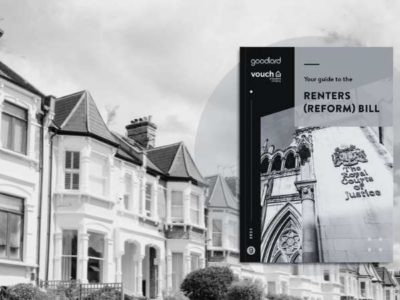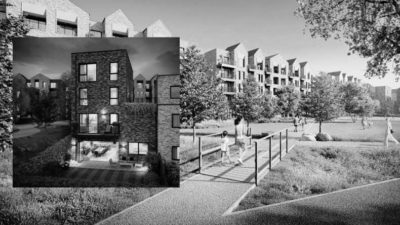While the number of residential planning applications being granted approval has climbed year on year, there has been a decline in the total number, the fifth consecutive annual reduction, while the commercial sector has enjoyed a significant year on year bounce.
Gov data has been analysed on the number of planning applications both being made and granted and how this level of construction market activity differs between the residential and commercial sectors.
The figures show that some 51,228 major and minor residential planning applications were made in the last year (2021/22).
This annual total marked a further -2.7% decline on the notable -10.8% drop seen the previous year, marking the fifth consecutive year that residential planning applications have declined since their peak of 50,227 in 2016/17.
However, the good news is that 37,956 of the applications made in 2021/22 were granted permission, equating to 74.1% of total applications made, the highest level of applications granted since 2018/19.
It’s an altogether different story across the commercial sector, where 8,646 total and minor commercial planning applications were made in 2021/22.
This total marked a 9.7% bounce on the previous year and reversed the year on year downward trend seen over the previous six years.
While 89.9% of all applications were granted permission, this is the lowest success rate seen since 2010/11. However, the 7,776 permissions granted did equate to an actual increase of 687 versus the previous year.
In terms of the breakdown of applications made across both sectors, householder developments have driven planning application activity over the last year, accounting for 57.3% of all applications made.
Those listed as ‘other’ accounted for 14%, while residential dwellings also made up a significant proportion of planning applications at 12.4%.
The alteration or extension of listed buildings (6.7%) and change of use (4%) also ranked within the top five.
Nicholas Christofi, Managing Director of Sirius Property Finance, the debt advisory specialists responsible for conducting the analysis, commented:
“A fifth consecutive dip in residential planning application volumes is certainly cause for concern given the fact that we simply aren’t building enough homes to satisfy demand.
This consistent decline is exactly why we were hoping to see the government announce some form of house building initiative in the recent spring statement, but with this failing to materialise, we could well see a sixth consecutive year on year decline come the end of this financial year.
One silver lining is certainly the uplift in commercial sector activity. While the commercial sector was hit far harder by pandemic restrictions, the decline in planning activity had been apparent for some years prior to the Covid outbreak.
So it’s reassuring to see that the appetite for commercial development has increased year on year, as has the number of applications being granted, even if the residential sector continues to be the driving force where volume of applications is concerned.”
| Table shows the number of residential applications made and granted by year and the annual change (major and minor). | ||||
| Period | Total major and minor residential decisions | Total major and minor residential number granted | Resi major and minor percentage granted | Total major and minor residential number granted – annual change % |
| 2008/09 | 64,655 | 41,571 | 64.3% | – |
| 2009/10 | 49,365 | 34,761 | 70.4% | -16.4% |
| 2010/11 | 51,740 | 37,445 | 72.4% | 7.7% |
| 2011/12 | 50,334 | 37,351 | 74.2% | -0.3% |
| 2012/13 | 49,886 | 37,385 | 74.9% | 0.1% |
| 2013/14 | 54,056 | 41,317 | 76.4% | 10.5% |
| 2014/15 | 58,371 | 43,834 | 75.1% | 6.1% |
| 2015/16 | 62,682 | 46,773 | 74.6% | 6.7% |
| 2016/17 | 67,227 | 50,227 | 74.7% | 7.4% |
| 2017/18 | 66,217 | 49,152 | 74.2% | -2.1% |
| 2018/19 | 62,413 | 46,808 | 75.0% | -4.8% |
| 2019/20 | 59,074 | 43,701 | 74.0% | -6.6% |
| 2020/21 | 52,778 | 38,998 | 73.9% | -10.8% |
| 2021/22 | 51,228 | 37,956 | 74.1% | -2.7% |
| Table shows the number of commercial applications made and granted by year and the annual change (major and minor). | ||||
| Period | Total major and minor commercial decisions | Total major and minor commercial number granted | Commercial major and minor percentage granted | Total major and minor commercial number granted – annual change % |
| 2008/09 | 21,729 | 18,682 | 86.0% | – |
| 2009/10 | 15,519 | 13,510 | 87.1% | -27.7% |
| 2010/11 | 14,957 | 13,255 | 88.6% | -1.9% |
| 2011/12 | 14,230 | 12,843 | 90.3% | -3.1% |
| 2012/13 | 13,268 | 11,975 | 90.3% | -6.8% |
| 2013/14 | 12,615 | 11,462 | 90.9% | -4.3% |
| 2014/15 | 12,772 | 11,709 | 91.7% | 2.2% |
| 2015/16 | 12,344 | 11,278 | 91.4% | -3.7% |
| 2016/17 | 12,165 | 11,157 | 91.7% | -1.1% |
| 2017/18 | 10,868 | 9,913 | 91.2% | -11.1% |
| 2018/19 | 9,720 | 8,883 | 91.4% | -10.4% |
| 2019/20 | 9,409 | 8,545 | 90.8% | -3.8% |
| 2020/21 | 7,827 | 7,089 | 90.6% | -17.0% |
| 2021/22 | 8,646 | 7,776 | 89.9% | 9.7% |
| Table shows the breakdown of major and minor planning applications made in 2021/22 (residential and commercial) | ||
| Major, minor and other developments | Total Planning Applications | % of Total |
| Householder developments | 228,101 | 57.3% |
| All other major and minor developments | 55,562 | 14.0% |
| Dwellings | 49,480 | 12.4% |
| Listed building consents (to alter/ extend) | 26,572 | 6.7% |
| Change of use | 15,818 | 4.0% |
| Advertisements | 13,251 | 3.3% |
| Retail and service | 3,795 | 1.0% |
| General industry, storage, warehousing | 2,815 | 0.7% |
| Offices, research and development, light industry | 1,816 | 0.5% |
| Listed building consents (to demolish) | 283 | 0.1% |
| Traveller pitches | 254 | 0.1% |
| Relevant demolition in a conservation area | 91 | 0.02% |
| Public service infrastructure development | 38 | 0.01% |
| Total | 397,876 | 100.0% |
Data on current and historic planning applications sourced from Gov UK – Live tables on planning application statistics





















Comments